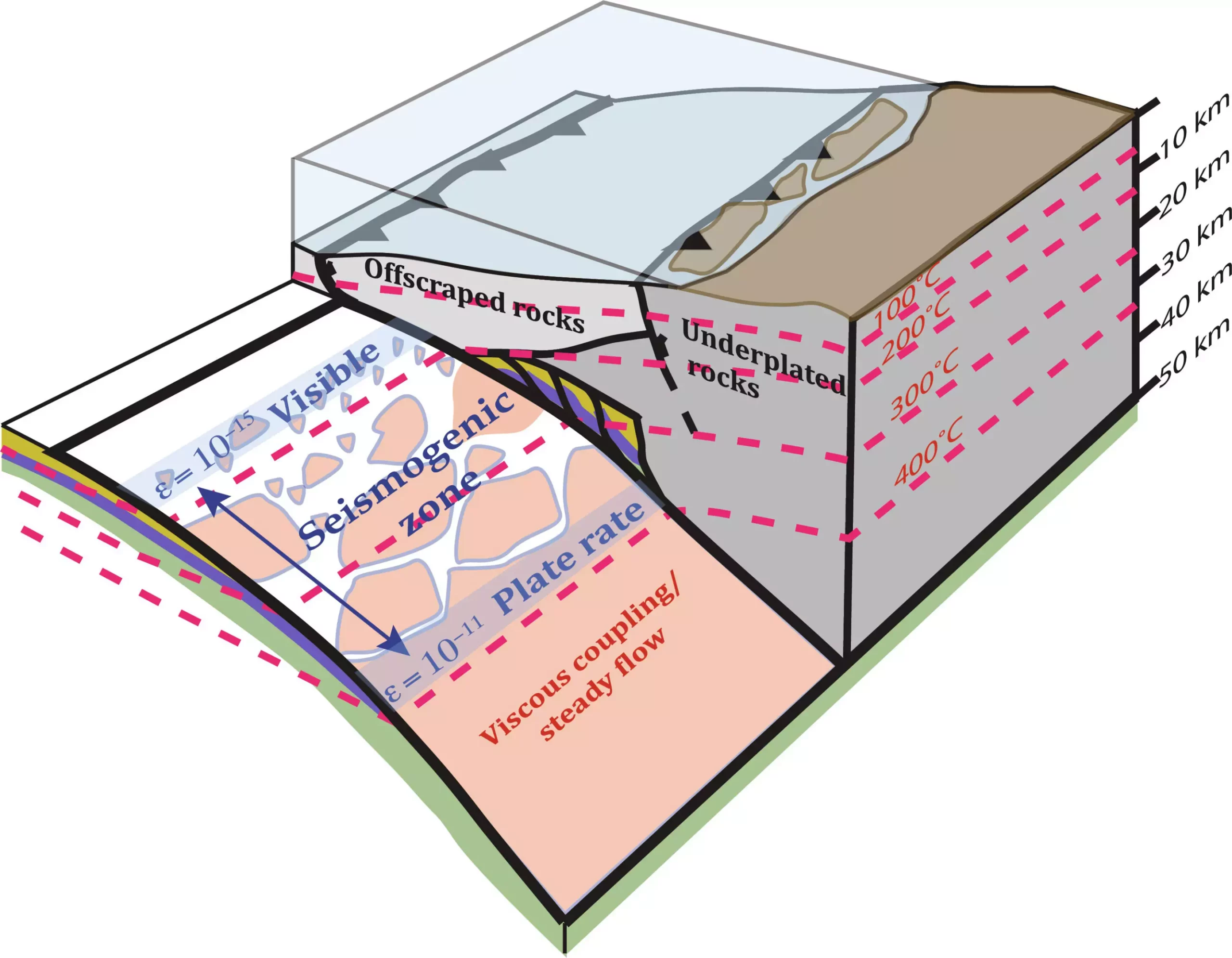Subduction zones, where tectonic plates collide, have always been of great interest to scientists due to their association with some of the world’s most powerful earthquakes. These earthquakes occur when stress builds up between the plates and is suddenly released, causing the plates to slide past each other. However, the behavior of subduction zones between major earthquakes remains largely unknown. In a recent study published in the journal Science Advances, researchers from Penn State and Brown University have discovered that rocks buried deep in ancient subduction zones could provide crucial insights into predicting the activity within these zones.
The research team focused on investigating pressure solution activity in subduction zones, which is the process by which rocks deform under great pressure. When rocks are squeezed together, the grains at their boundaries dissolve into the water present in pores, forming pressure solution. This dissolution of grains allows the rocks to change shape and affect the movement of tectonic plates. Drawing an analogy, the lead author, Donald Fisher, likens it to ice skating, where the blade melts the ice, enabling gliding. Similarly, in rocks, quartz grains dissolve at stressed contacts and precipitate in cracks.
The Importance of Pressure Solution
The scientists emphasized that pressure solution is a fundamental process that occurs during the interseismic period in subduction zones. The occurrence of pressure solution significantly impacts the amount of elastic strain that accumulates in different parts of the seismogenic zone, the region where most earthquakes occur. By understanding pressure solution, researchers can gain valuable insights into the mechanics of subduction zones and improve earthquake predictions.
Exploring pressure solution in the laboratory is challenging due to its incredibly slow nature. To overcome this obstacle, the research team turned to rocks that were once subjected to tectonic pressures and later brought to the surface through geological processes. These rocks contain microscopic shears and textures that provide evidence of pressure solution. By studying ancient rocks with known pressure histories, scientists can develop models to predict pressure solution in active subduction zones today.
Building upon previous studies that linked stress and strain rate in rocks, Fisher and his colleague, Greg Hirth, created a more comprehensive model. This new model considered additional factors such as grain size and solubility. By parameterizing solubility as a function of temperature and pressure, the researchers were able to generate accurate strain rates. This model allows for the prediction of strain distribution in the seismogenic layer, thereby providing insights into where strain is occurring within subduction zones.
The researchers applied their model to the Cascadia Subduction Zone, which spans from northern California to Canada. This fault line runs through major cities such as Portland, Seattle, and Vancouver, making it an excellent case study. The temperature and strain buildup along the Cascadia Subduction Zone have been extensively studied, and the results of the model align with crustal movements observed through satellite observations. This validation further supports the accuracy and usefulness of the researchers’ new model.
The Implications for Earthquake Predictions
By gaining a better understanding of pressure solution and its influence on strain distribution within subduction zones, scientists are moving closer to improving earthquake predictions. The ability to identify regions within a subduction zone that are experiencing high strain can help determine areas at greater risk of an earthquake. With this knowledge, appropriate measures can be taken to enhance preparedness and minimize the potential impact of future earthquakes.
The study conducted by researchers from Penn State and Brown University sheds light on the significance of pressure solution in subduction zones. By examining rocks from ancient subduction zones, scientists can develop models that accurately predict pressure solution activity in active zones today. The newfound understanding of strain distribution within subduction zones brings us closer to more precise earthquake predictions. With continued research and advancements in this field, we can work towards minimizing the devastating consequences of earthquakes on human populations and infrastructure.



Leave a Reply